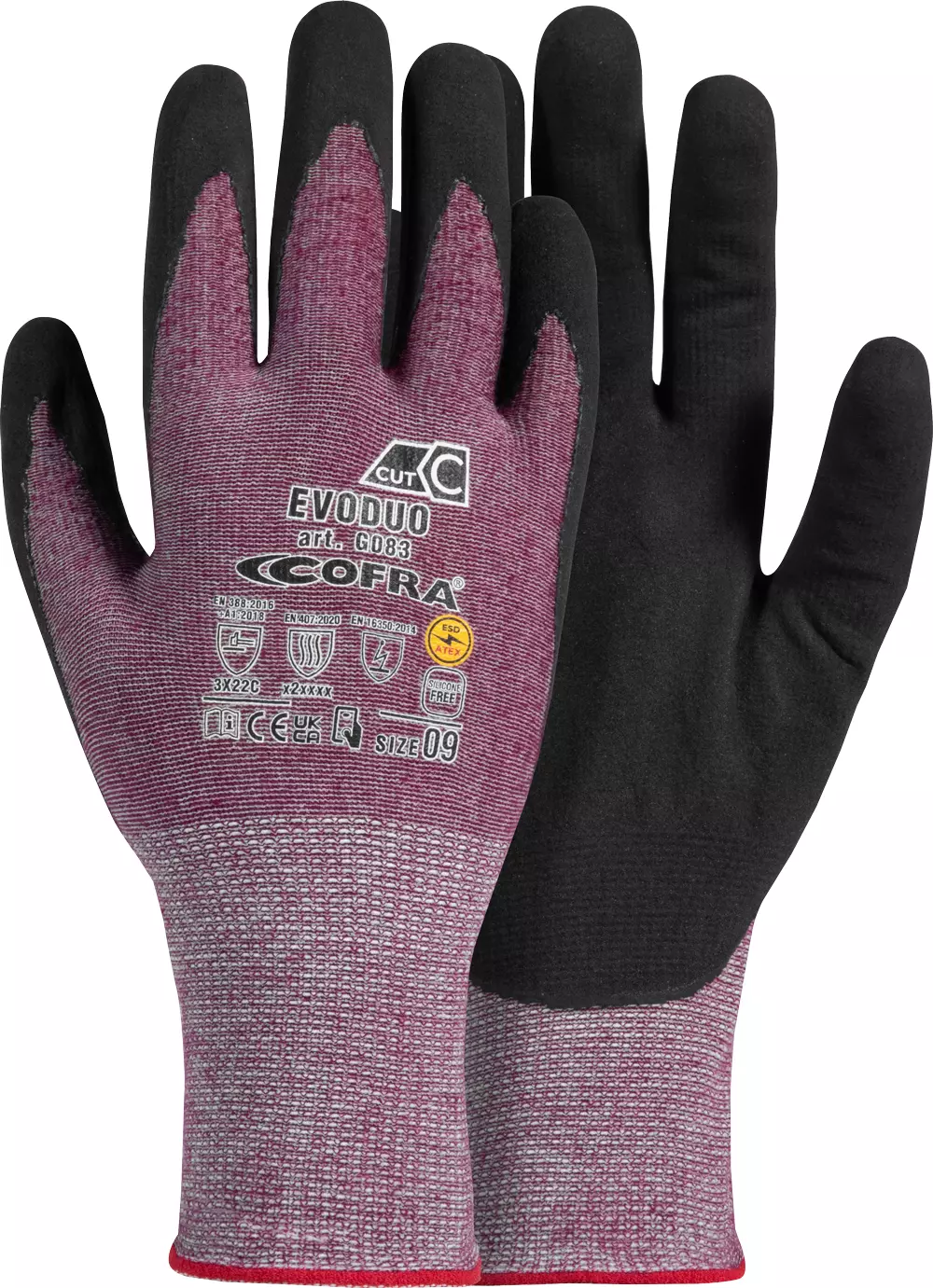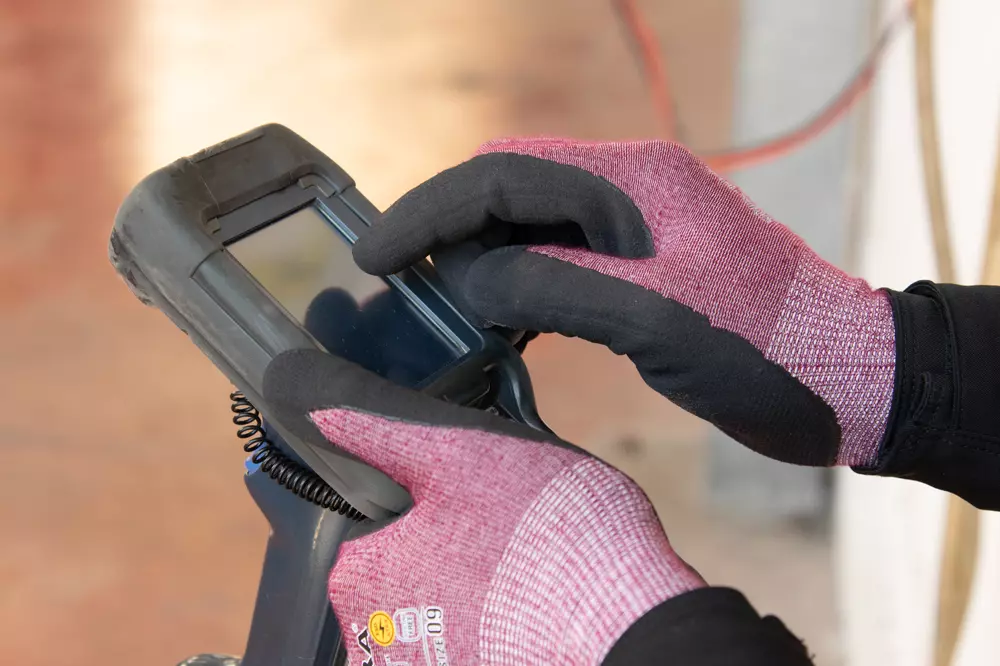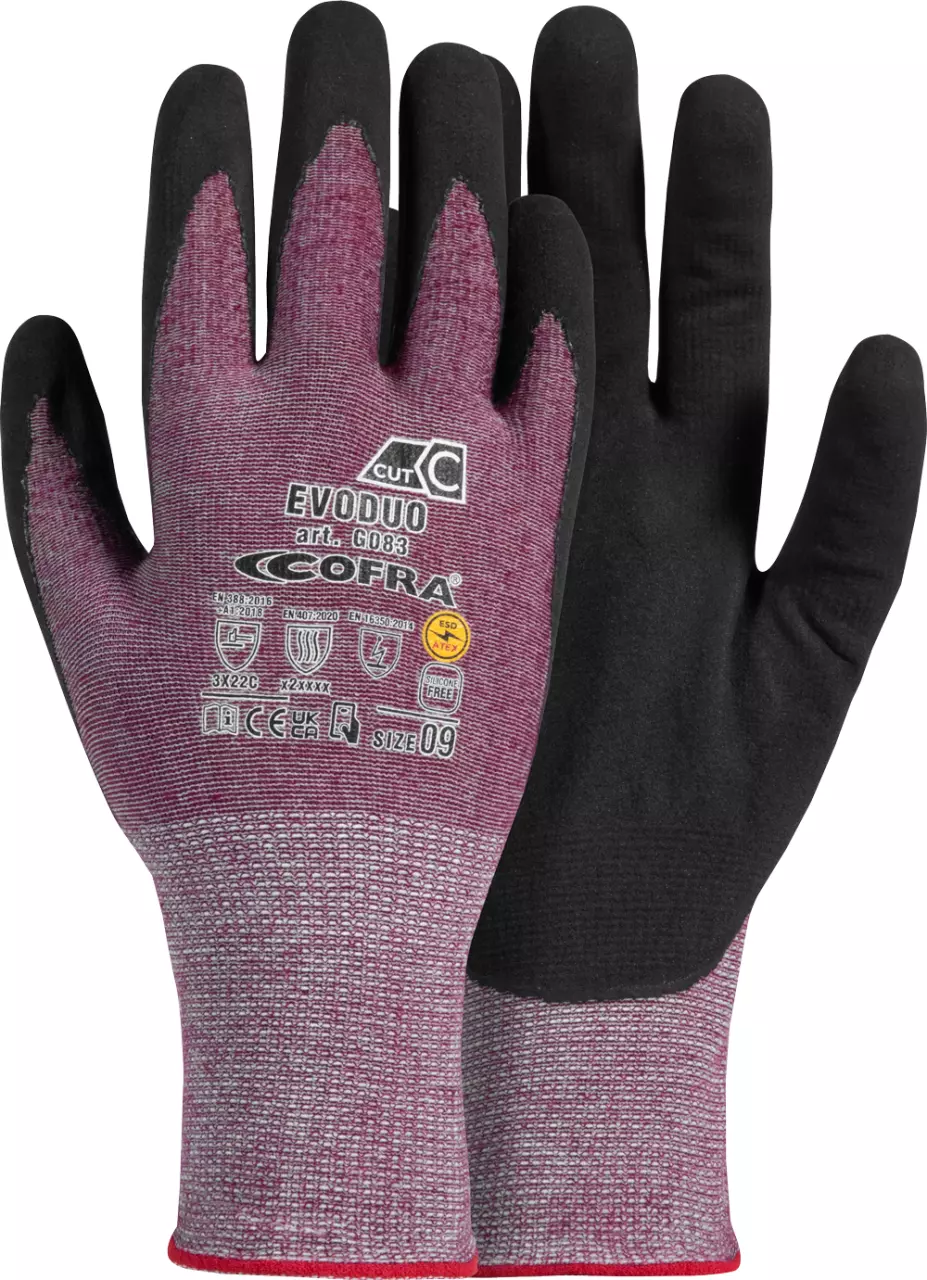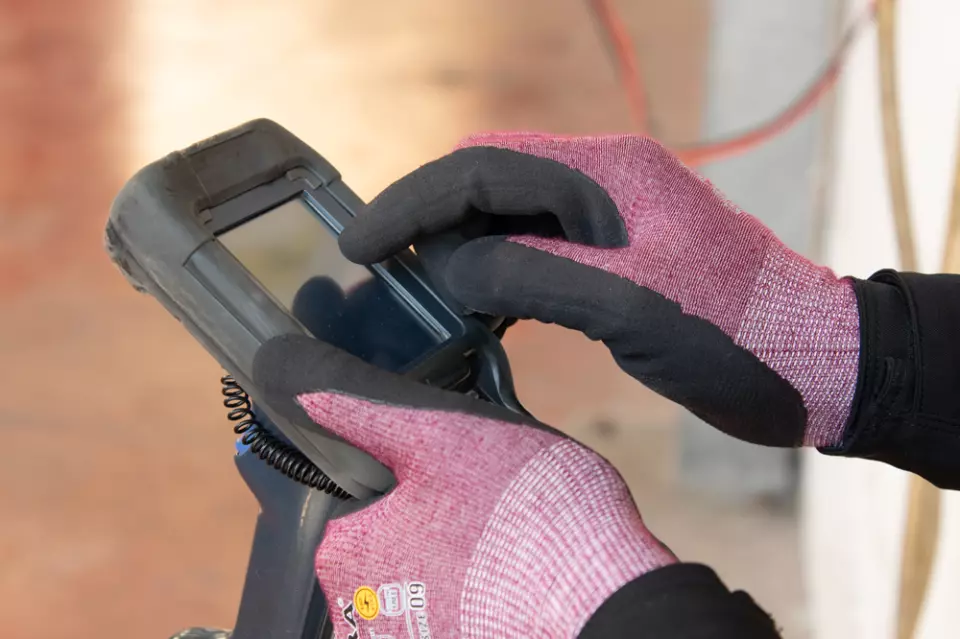


Features You'll Love

Cuff Style · Knit
Determines how the glove secures around the wrist, affecting fit, comfort, and protection coverage at the wrist area.

Glove Features · Touch Screen
Seamlessly interact with touch screens, maintaining protection and efficiency on the job.

EN 388 · Cut Resistance, ISO 13997 Level B, Abrasion Resistance Level 3, Tear Resistance Level 2
EN 407 · Heat Contact Level 2, Burning Behaviour Level X, Heat Convection Level X, Radiant Heat Level X, Metal Splash Resistance Level X, Molten Metal Resistance Level X
Offers low cut protection for general work, such as packaging and light assembly.
Provides good resistance against scraping, scratching, and rubbing on rough or abrasive surfaces.
Offers moderate resistance against snagging or catching on rough objects, preventing small rips from growing.
Protects your hands when briefly handling hot objects up to 250°C. This allows you to hold an item at this temperature for at least 15 seconds, ideal for tasks like handling hot pots or equipment.
This product was not tested for its resistance to open flames or burning behavior under the EN 407 standard. Therefore, it does not claim to offer protection against fire and should be kept away from naked flames.
This product has not been tested for protection against convective heat, which is the transfer of heat through moving air or fluids. Therefore, no specific performance level for delaying heat transfer from a flame is claimed.
This product has not been tested for protection against radiant heat, the invisible heat felt from a distance like near a furnace. Therefore, it does not have a certified performance level for this specific type of intense heat hazard.
This product has not been tested for resistance against splashes of molten metal under the EN 407 standard. It is not intended for use in activities like welding or foundry work where this specific protection is required.
This product was not tested for resistance against molten metal splashes under the EN 407 standard. Therefore, it is not intended for use in activities like welding or foundry work where this specific hazard is present.
Cofra
Evoduo Cut Resistant Glove, 12 pairs
Evoduo Cut Resistant Glove, 12 pairs
4.5 / 5
47,49 €
Price per 12 pairs
3,96 € / pair
Choose size
Free delivery
Features You'll Love

Cuff Style · Knit
Determines how the glove secures around the wrist, affecting fit, comfort, and protection coverage at the wrist area.

Glove Features · Touch Screen
Seamlessly interact with touch screens, maintaining protection and efficiency on the job.

EN 388 · Cut Resistance, ISO 13997 Level B, Abrasion Resistance Level 3, Tear Resistance Level 2
EN 407 · Heat Contact Level 2, Burning Behaviour Level X, Heat Convection Level X, Radiant Heat Level X, Metal Splash Resistance Level X, Molten Metal Resistance Level X
Offers low cut protection for general work, such as packaging and light assembly.
Provides good resistance against scraping, scratching, and rubbing on rough or abrasive surfaces.
Offers moderate resistance against snagging or catching on rough objects, preventing small rips from growing.
Protects your hands when briefly handling hot objects up to 250°C. This allows you to hold an item at this temperature for at least 15 seconds, ideal for tasks like handling hot pots or equipment.
This product was not tested for its resistance to open flames or burning behavior under the EN 407 standard. Therefore, it does not claim to offer protection against fire and should be kept away from naked flames.
This product has not been tested for protection against convective heat, which is the transfer of heat through moving air or fluids. Therefore, no specific performance level for delaying heat transfer from a flame is claimed.
This product has not been tested for protection against radiant heat, the invisible heat felt from a distance like near a furnace. Therefore, it does not have a certified performance level for this specific type of intense heat hazard.
This product has not been tested for resistance against splashes of molten metal under the EN 407 standard. It is not intended for use in activities like welding or foundry work where this specific protection is required.
This product was not tested for resistance against molten metal splashes under the EN 407 standard. Therefore, it is not intended for use in activities like welding or foundry work where this specific hazard is present.
Product description
Professional protective gloves constructed with innovative NYLIRON yarn technology, providing moderate cut protection on both palm and back surfaces. These gloves offer enhanced thermal insulation for brief contact with objects up to 250°C, while maintaining excellent flexibility, breathability, and dexterity. The antistatic and ESD-compliant design makes them suitable for electronics work, with additional touch screen functionality for modern workplace requirements.
Product Features:
- NYLIRON yarn construction with reinforced lining
- Touch screen functionality compatible with capacitive and resistive devices
- Enhanced thermal insulation for brief contact up to 250°C
- Antistatic, ESD, and ATEX compliant
- Silicone-free construction
Technical Details:
- Material composition: NYLIRON yarn, nylon, elastane
- Nitrile foam coating
- Fineness: 15
- Dexterity level: 5
- Cut protection: Level C
Recommended Applications:
- Agriculture, building and construction, electrical engineering, DIY, wood industry, paper industry, plastics industry, electronics industry, engineering industry, textiles and leather industry, transport and logistics
Standards:
- EN 388:2016+A1:2018 - 3X22C
- EN 407-2020 - X2XXXX
- EN 16350:2014
- ESD-ATEX certification